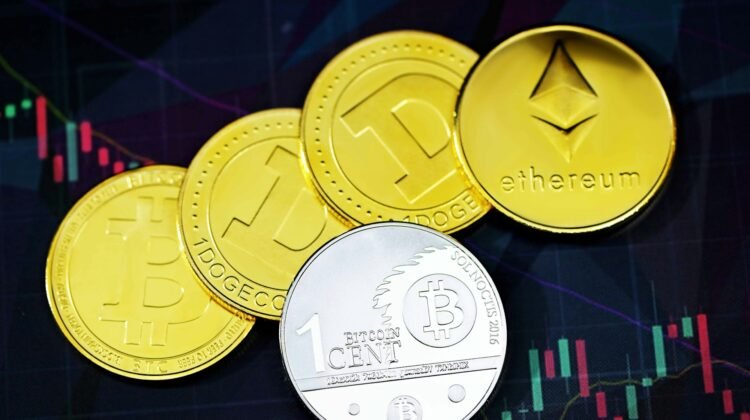
In the fast-paced world of cryptocurrency trading, understanding the concept of liquidity in crypto is crucial.
Liquidity plays a pivotal role in shaping trading strategies, affecting the ease and cost of transactions. Whether you are a seasoned trader or just getting started in the crypto space, recognizing how liquidity influences market dynamics can empower you to make more informed decisions.
Keep reading to learn more.
What is Liquidity?
Liquidity, in simple terms, refers to the ability to quickly buy or sell an asset without causing a significant impact on its price. In the context of cryptocurrencies, liquidity in crypto means the extent to which digital assets can be traded in the market at stable prices. High liquidity suggests a well-rounded market where trades are executed smoothly, while low liquidity might lead to price slippage or excessive volatility.
Importance of Liquidity in Crypto Markets
Understanding liquidity is essential for any crypto trader. Here are some key reasons why liquidity matters:
Ease of Transactions
High liquidity ensures that there are enough buyers and sellers, facilitating quicker and more efficient trade execution. This minimizes the risk of price slippage, where the traded price differs from the expected one.
Market Stability
Markets with high liquidity tend to be more stable, meaning that prices are less susceptible to drastic changes from large orders. This stability attracts more participants, enhancing the market’s robustness.
Cost Efficiency
In a liquid market, traders can exit or enter positions with minimal impact on the asset’s price, resulting in lower transaction costs. Conversely, in illiquid markets, even small trades can cause significant price movements and incur higher costs.
Price Integrity
A market with sufficient liquidity upholds price integrity by ensuring prices reflect the actual value of the asset. It’s driven by supply and demand forces rather than external speculations.
Liquidity Metrics to Consider
To gauge liquidity in the crypto market, you need to pay attention to various factors. Traders often consider the following metrics:
Trade Volume
A higher trading volume generally indicates higher liquidity. Crypto assets with substantial daily trading volumes are less likely to experience significant price swings.
Order Book Depth
A deep order book features several buy and sell orders at various price levels, revealing active participation from traders. This signifies strong liquidity since trades can be absorbed without adversely affecting prices.
Bid-Ask Spread
The difference between the highest price a buyer is willing to pay and the lowest price a seller is willing to accept. Narrow spreads are indicative of high liquidity, as they allow transactions to occur easily at competitive prices.
Factors Influencing Liquidity in Crypto
Several factors affect the liquidity of cryptocurrency markets. Understanding these will help you better assess liquidity.
Innovation and Technology
Advances in blockchain technology and the introduction of new financial products can enhance liquidity. For instance, decentralized finance (DeFi) platforms introduce liquidity pools that facilitate efficient trading of crypto-assets.
Exchange Performance
The performance of cryptocurrency exchanges significantly impacts liquidity. Leading exchanges with robust infrastructure attract more users and offer higher liquidity compared to smaller, less-established platforms.
Regulatory Environment
Regulatory clarity and supportive policies can boost market confidence, encouraging greater participation and improving liquidity. Conversely, regulatory uncertainties or bans can deter investors, reducing liquidity.
Market Maturity
As the cryptocurrency market matures, it naturally gains more participants, effectively increasing liquidity. Historically, more established cryptocurrencies like Bitcoin and Ethereum have higher liquidity compared to newer, lesser-known coins.
Macro-Economic Factors
Broader economic conditions and global events can influence market sentiment. This can subsequently impact liquidity, as traders assess risk and profitability.
Strategies to Navigate Liquidity Challenges
Successfully navigating liquidity dynamics can enhance trading profitability. Here are some key strategies:
Conduct Due Diligence
Always research the liquidity profile of a cryptocurrency before trading. This includes analyzing trade volumes, order book data, and historical price patterns.
Diversify Portfolio
Consider investing across a range of assets with different liquidity levels. A mix of high and low liquidity assets can optimize trading opportunities and risk management.
Use Advanced Order Types
Limit and stop orders can help manage entry and exit points effectively. This is especially important in markets with volatile liquidity.
Choose Reputable Exchanges
Trading on well-established exchanges with robust liquidity can minimize the risks associated with sudden price movements. Always research and exchange before using it.
Succeeding in the Crypto Space
Understanding liquidity in crypto is a foundational aspect of effective trading. By recognizing its significance and applying strategic insights, traders can better navigate the complexities of the cryptocurrency market.
High liquidity fosters efficient and cost-effective trading, enhancing both the appeal and stability of digital assets. As the market continues to evolve, staying informed and adaptable will be crucial to taking full advantage of the opportunities that crypto trading presents.
To learn more about long-term investing, check out our DCA guide.
